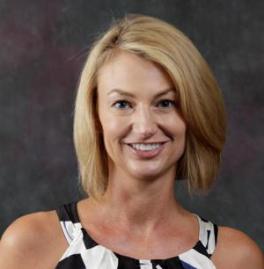
Hello, everyone. I hope that you had a great and productive fall semester and enjoyed the holidays as we start the spring semester. We have certainly been busy at the CJRC over the last year. We had several successful and engaging presentations last spring including the Reckless-Dinitz Lecture (Dr. Valerie Jenness) and the Institute for Excellence in Justice Lecture (Dr. Christopher Uggen), which are are summarized in this newsletter, written by our undergraduate editor, Tatum Kilgallon. In addition to our flagship presentations, the CJRC also sponsored talks from Professor Forest Stuart who discussed policing among the urban poor and Dr. Noah Tamarkin whose presentation focused on the emergence and implications of DNA technologies. The CJRC along with several other campus entities, co-sponsored a talk by Piper Kerman, author of the book that became a hit series, “Orange is the New Black.” During the campus event, Kerman discussed, in addition to her personal story portrayed in her book and TV show, her passion for addressing inequality in the criminal justice system.
The CJRC continues to move forward in accordance with our annual strategic plan. The internship program continues to flourish as our affiliated agencies around the city recognize the tremendous benefits of working with talented Ohio State undergraduate students on agency research projects. We finished the spring term with 41 active interns in over 15 field placement locations. In addition, 16 students were either placed or continued with their placements over the summer term. Our outstanding field supervisors continue to train, model professionalism and provide excellent opportunities for these students resulting in students gaining invaluable real-world research experience in an applied setting. Our students continue to report excellent experiences and are not only excited about the work they are doing and the impact it has, but also appreciate how these intern opportunities advance their career aspirations. In addition to adding students, under the guidance of CJRC’s program manager Chris Yanai, we continue to add new off-campus research sites and agencies as well as fulfill agency requests for additional student interns. In particular, the Columbus Police Department and the Ohio Department of Youth Service have greatly expanded the number of intern opportunities for students.
Other CJRC activities included sponsoring a career panel for undergraduates with representatives from the Ohio Department of Youth Services, Ohio Emergency Operations Center and the Franklin County Probation Department. In addition, several CJRC-sponsored guest speakers from the community and from the CJRC spoke to a variety of groups on topics such as juvenile gangs, corrections, capital punishment, critical incident management and offender reentry. The student organization PassGo, which is affiliated with the CJRC sponsored a spring panel on the role of stigma and how it adversely impacts ex-offender employment opportunities following imprisonment. Students from PassGo and the Sociology/Criminology Club participated in a CJRC sponsored field trip to the Ohio Bureau of Criminal Investigation where they received a tour of the various labs and spoke with professionals in the field regarding forensic investigations and evidence identification and management. More recently, students from both groups toured the Ohio Reformatory for Women and, in addition to a tour of the facility, spoke with inmates at length in regards to life in prison, personal issues with drugs and crime, reentry and family. The nursery inside the prison was an area of great interest.
The expansion of our professional relationships and collaboration with critical state, law enforcement and community agencies continues to be of the highest priority. Representatives and affiliates from the CJRC continue to engage with key leaders from a variety of agencies and organizations to discuss data sources and future collaboration with CJRC affiliates. The CJRC continues to engage leaders from the Ohio Department of Rehabilitation and Correction, Ohio Reformatory for Women, Ohio Department of Youth Services, Bureau of Criminal Investigation, Office of Criminal Justice Services, Ohio Health Department, Ohio Emergency Operations Center and the Ohio Department of Administrative Services Office of Information Technology. These collaborations are opening doors for Ohio State faculty and students by increasing possibilities for research collaboration, data sharing, intern experience and site visits. In particular, much progress has been made towards collaborating with the Bureau of Criminal Investigation to access their vast record system entailing data on criminal justice contact and outcomes in Ohio.
I’m also happy to announce that some of our faculty affiliates, including those who were recipients of CRJC seed grants, were successful in generating grant support for their various research projects including myself (“Online Criminal Drug Networks,” sponsored by NSF; “Understanding Incarceration and Re-Entry Experiences of Female Inmates and their Children: The Women’s Prison Inmate Networks Study,” sponsored by NIJ; “Network Mechanisms in Prison-Based Therapeutic Community,” sponsored by NIH; and “The Prison Inmate Networks Study (PINS),” sponsored by NSF); faculty affiliate Hollie Nyseth Brehm (“Re-entry and Reintegration of Convicted Genocide Perpetrators,” sponsored by NSF); and faculty affiliate Paul Bellair (“High Security Prison Reentry Research,” sponsored by ODRC). We look forward to seeing results from these projects appear in future publications. Please see our website for additional details about our faculty and student research seed grant program.
We also continue to engage with the larger Ohio State community as well. Once again, we participated as judges for the Denmen Research Expo, participated in the Community Engagement Forum at the Student Union and again participated in the annual Research Forum sponsored by the Office of Research at the Research Commons. The CJRC continues to facilitate connections between the university community and practitioner community on behalf of our researchers, affiliates and students. Please let us know if we can help you connect with faculty, students, or state agencies working on criminal justice issues.
I will conclude here by wishing everyone a happy and productive 2018! I also hope that you enjoy our newsletter!
